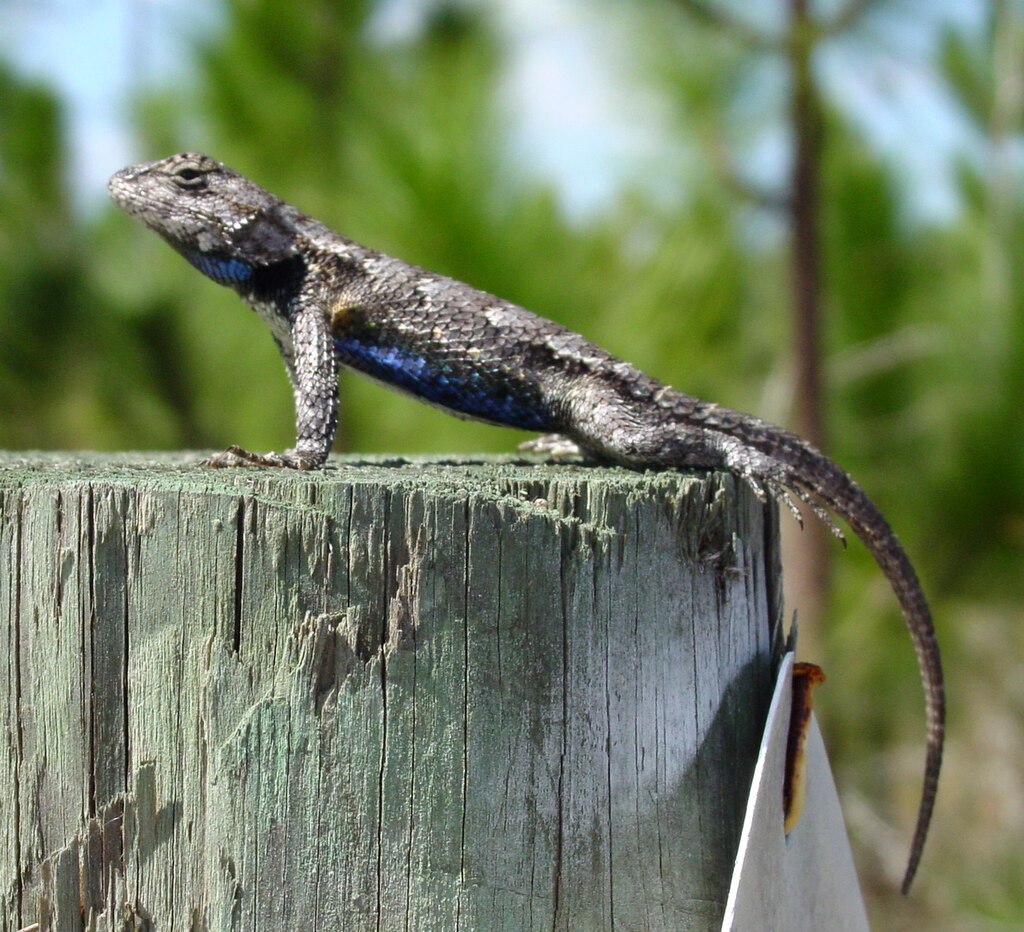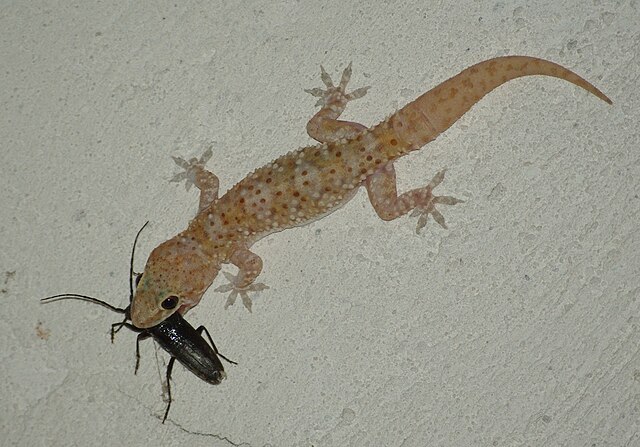There are seven lizard species that can be spotted in Maryland. All these species have legs, even though there are legless species in other parts of the country.
You may see up to four species of skink, one whiptail species, one spiny lizard species and a gecko species in the Maryland area.
Continue reading to find out more.
Is There Any Poisonous Lizard In Maryland?
There are two lizard species that are considered poisonous in North America. These are the Gila monster and the Mexican beaded lizard. Both are large and thick bodies with short legs, living in the desert areas of Mexico, and the southwestern United States.
These do not make up any of the species you will come across in Maryland, but most reptiles do carry Salmonella, which you do need to be aware of.

Reptiles, if not all reptiles, carry salmonella bacteria in the intestinal tracks, shedding the bacteria in their feces. The reptiles don’t get sick from the bacteria, but it can cause serious illness in humans.
Salmonella can be spread easily from reptiles to humans when humans touch anything that the lizard may have been on or touched. In order for the bacteria to spread, it must be ingested.
It is often a problem when humans touch or handle a lizard and then later put their hands to their mouth. This is why it’s essential if you touch or handle any of the lizard species you find in Maryland, ensure you wash your hands thoroughly.
Lizards In Maryland
The seven types of lizards you can expect to come across in Maryland includes:
1. Broad-headed Skink

Scientific name: Plestiodon laticeps.
Common name: broad-headed skink, broadhead skink.
The broad-headed skink is the largest of the four skinks you will find in Maryland.
Males look similar to the five-lined skink, but larger in size with a red dewlap that swells during mating season.
Females and juveniles have five to seven stripes that run down the length of their bodies.
Juveniles also have bright blue tails, which fade as they age.

These skinks can be found in forest areas, where they spend a lot of their time in trees, basking in the sun, and catching prey.
They are not easy to spot, because they spend so much of their time high in the treetops.
Females are often seen in May to July when they come down to lay their eggs in decaying logs.
Further Reading:
2. Common Five-lined Skink

Scientific name: Plestiodon fasciatus.
Common name: (American) five-lined skink, blue-tailed skink (for juveniles) and red-headed skink (for adults), eastern red-headed skink.
Juvenile five-lined skinks have five white to yellow strips on their heads with a black body and bright blue tail.
Females are similar to the juveniles, but they are dark brown to gray without the blue tail.
Males are tan or olive with orange to red dewlaps during the mating season.

These skinks prefer wooded areas and are often found under rocks or hiding under the wooded debris, though they can often be found on porches and backyards.
They are often spotted hiding under debris and on the edge of woodlands during cool days and basking in the sun on logs and stumps during warm days.
They will bite if captured, but seldom pierce the skin.
3. Coal Skink

Scientific name: Plestiodon anthracinus.
Common name: coal skink.
Coal skinks can brow up to 7 inches with four light stripes on the back that reach to the tail, they also have wide side stripes. They do not have any stripes on their head, which makes them easier to identify from the five-lined and broad-headed skinks.
Males have red or orange color on the sides of their heads.

These skinks prefer wooded areas with access to water, such as creeks and springs.
If chased, they will drive underwater to hide under rocks and debris until the threat has passed.
Females are often seen in late spring and summer guarding their eggs in leaf litter.
These skink lizards are endangered in Maryland and if found you must please report your sighting to the Maryland Wildlife and Heritage Service.
Further Reading:
4. Little Brown Skink

Scientific name: Scincella lateralis.
Common name: Little brown skink, ground skink.
The little brown skink is a dark brown to golden color with dark brown stripes that run down their sides with small scales that are smooth and a light-colored belly.
Growing up to five and a half inches, this lizard can be found in hardwood forests, where there are rotting logs and an abundance of leaf litter. They do prefer moist environments, mating home near streams. They are seen in fields and will seldom climb.

They are very nervous lizards and will hide quickly when approached. If you lift a log and one is found, they will flee under other debris or into shallow water to escape.
5. Six-lined Racerunner

Scientific name: Aspidoscelis sexlineatus.
Common name: six-lined racerunner.
This slender lizard can grow up to nine and a half inches. It has light stripes which run down from the head to the tail with a brown to black color on its back with small scales.
They have larger scales on their tummy with a long tail that is more than half the total length of the lizard.
Juveniles look the same as adults, except they have a bright blue tail, which fades with age.
They prefer dry and sunny areas with lots of loose sand, grass, and shrub cover.
They are very fast and will flee if approached. You may be able to find one by lifting logs that are lying on sandy areas.
6. Eastern Fence Lizard

Scientific name: Sceloporus undulatus.
Common name: eastern fence lizard, prairie lizard, fence swift, gray lizard, northern fence lizard, pine lizard.
The Eastern fence lizard can grow up to seven and a half inches and is the only spiny lizard in Maryland.
It has pointed scales on a gray or brown body. Males have blue on their side that is surrounded by black and on their throats. Females have wavy lines and very pale blue sides on the base of their throats.
These lizards are often seen in open dry woodlands, where they prefer pine woods. They can be seen under rotting logs and stumps or basking in the sun on the fence in your back yard.
These lizards are observed from April to August in the morning and evening when searching for food.
Further Reading:
7. Mediterranean Gecko

Scientific name: Hemidactylus turcicus.
Common name: Mediterranean house gecko, Turkish gecko, moon lizard.
The Mediterranean gecko is a very common gecko in North America, growing up to five inches.
It has large eyes and a light brown to gray color with dark spots. Their belly is almost translucent.
They are seen around human dwellings. Being nocturnal, they are mostly spotted at night as they hunt for insects inside the home. You often find them near outdoor lights where they lie in wait for insects attracted to the light.
Further Reading: